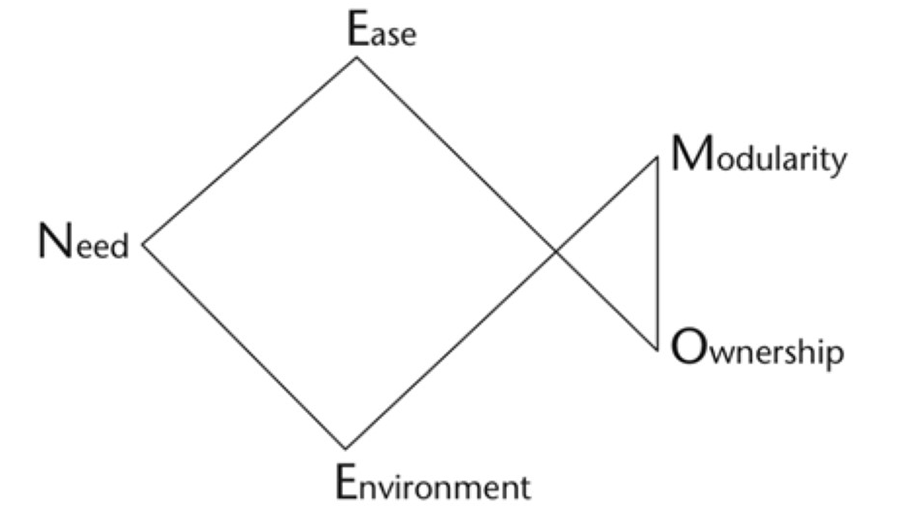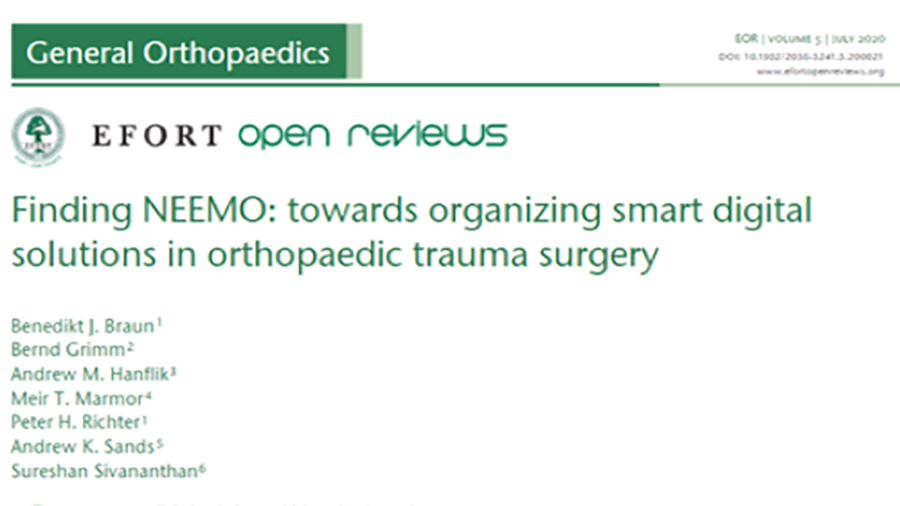Portrait of Benedikt Braun
Benedikt Braun, trauma and orthopedic surgeon, joined the AO family when he accepted the position of Chair of the AO Technical Commission's newly formed Smart Digital Solutions Task Force (SDSTF).
Benedikt was born in 1987, the eldest of four siblings, in Homburg, a German town about 20 km from the French border. When he was ten, his family moved north to Niederrhein, where his father, also a trauma surgeon, headed a department at the clinic in Kleve. Since his mother, an anesthesiologist, was also in the medical profession, it might have seemed inevitable that Benedikt would also choose a medical career.
However, by the age of 14 he had made a name for himself as a talented young musician, playing the flute. After winning national competitions repeatedly and playing at large concert venues, such as the Tonhalle Düsseldorf, he considered studying music. In preparation for this he began taking additional piano lessons with a university professor from Düsseldorf.
After receiving a bottle of wine for Christmas, his piano professor once said ironically "No matter how much wine you give me I still wouldn't be able to cope with how badly you play." This outspoken but heartfelt comment prompted young Benedikt to consider applying his talents in a different direction. Nonetheless, he and his piano professor formed a fruitful flute-piano duo which led them to many concert engagements well throughout Benedikt's subsequent university time. But it was then that his thoughts turned back to medicine.
Thanks to his mediocre skiing skills, in 2006 he suffered a meniscus injury that spared him from military service. He enrolled to study medicine in Aachen straight after high school, and what had started as a stopgap quickly became a calling. The pragmatism required by trauma surgery was something he found particularly inspiring.
During his university days, Benedikt was accepted as a scholar of the German National Merit Foundation, Cusanuswerk, Dean's List and of North Rhine-Westphalia. He completed several internships abroad, including one at the Hospital for Special Surgery, NY, US, and almost every year, he spent time in St. Augustin, Florida, US, with the late Dr Warren Kluger (Fig 1). He was a general and vascular surgeon by training but a true old-school do-a-bit-of-everything surgeon and was friends with Benedikt's high-school host family. Alongside Benedikt's father, Dr Warren Kluger inspired Benedikt to pursue a career in surgery by demonstrating the necessary work ethic.
As he was nearing the end of his studies, Benedikt was uncertain about his next steps. Through a series of coincidences, he ended up back home. I first had the pleasure of meeting him after a talk at DKOU in Berlin, shortly before he applied for a position back in his hometown, Homburg.
Fig 1 Young Benedikt and Dr Warren Kluger.
He began his residency at the Saarland University Hospital in Homburg immediately after graduating from medical school in 2013. Education there covers the entire spectrum of traumatology and orthopedic surgery and consequently Benedikt also boasts wide-ranging interests. Nevertheless, he says traumatology of the lower extremity is his main focus, as he regards the feet as the foundation of the human body. "If patients have problems with their feet or are unable to walk, it can be of equal importance to them as having an impaired function of the hand – after all, it is our oldest and still primary means of transportation." In 2018, he completed a short fellowship in foot and ankle surgery with Dr Andrew Sands of New York (Fig 2; member of the AO Technical Commission Trauma board) and Dr Roy W. Sanders of Tampa and since August 2019, he is consultant surgeon in Homburg.
Fig 2 Together with Dr Andrew Sands of the AO Technical Commission Trauma board.
In addition to his clinical work, Benedikt has always been passionate about research. He believes that hardware, instruments, and techniques are already highly developed and thus achieving major improvements in these fields requires tremendous efforts. Although current technical solutions in traumatology are diverse and plentiful, many already existing general solutions have not yet been specifically utilized for trauma surgery. He is convinced that there is still a lot of room for improvement and optimization in the healthcare system today.
The use of new interdisciplinary technologies holds considerable potential for bigger developmental leaps than have been achieved to date. It was gratifying to have the chance to share my enthusiasm for implementing innovative research projects to improve patient care with someone as talented and driven as Benedikt. Several years ago, the AO Technical Commission launched a strategic initiative to foster smart sensor technology in an effort to obtain more information about fracture healing and patient performance during rehabilitation.
As one of my mentees, while he was a junior doctor, Benedikt become involved in AO Technical Commission research projects that involve pressure measuring insoles that use wireless technology to monitor patients during their postoperative rehabilitation period (Fig 3). Examples of his valuable contribution include a validation study and several clinical studies in this area which even led to simulation assisted interfragmentary movement prediction based on the patient's gait.
Fig 3 Benedikt reporting about the first clinical study results with the pressure measuring insole at the AO Technical Commission Patient Monitoring Workshop in 2016.
Benedikt is regularly involved in the annual AO Trauma Pelvis course in Homburg and in summer 2019 he submitted his professorial dissertation. Talking to him, his natural enthusiasm and gift for inspiring his students to further explore trauma and orthopedic surgery come across almost immediately. He is involved in lectures on the lower extremity and a practical seminar. He also offers an elective subject with case discussions for students who are interested in gaining a deeper understanding of traumatology. This course has been very well received and as a result he was recognized by the medical department in 2018 with the annual teaching award. Furthermore, he is actively involved in working with the young surgeon committees of both the German Surgical Society (DGCH), as well as the professional society (Berufsverband der Deutschen Chirurgen) organizing sessions, lectures and instructional courses for students and young surgeons.
His primary motivation for working in trauma surgery is clinical practice: "Being able to help an acutely injured patient, and establishing mutual trust, is indeed an incredibly rich experience." Benedikt says that barely any clinical professions offer regular nine-to-five working hours. He feels that traumatology is not necessarily worse than other medical disciplines for achieving a balance between your private and professional life. Irregular shifts and travel can be demanding, but a lot depends on the clinic, your own approach, and your personal circumstances. Benedikt emphasizes that the team and spirit in Homburg are excellent and that he feels honored to work with them. His goal is to create such a productive work atmosphere also in the SDSTF. His family backs his endeavors and he is particularly fortunate that his wife, Eva-Marie, is such a support. She provides him frequently with beneficial advice, and while she is an OB/GYN physician by training her knowledge of trauma surgery is quite impressive.
Away from work, he enjoys traveling, hiking and moderate mountaineering. Benedikt and his wife constantly strive to achieve more and reach higher altitudes. He has started doing smaller glacier tours (Fig 4) and recently succeeded in realizing a long-cherished dream by climbing Mount Kilimanjaro together with his wife (Fig 5). Music continues to play an important role in Benedikt's life: he practices the flute regularly, but these days considers himself a better listener than player.
Fig 4 Roped up with his father descending over a deeply crevassed glacier.
Fig 5 Benedikt with his wife at Uhuru peak (Kibo/Kilimanjaro), the highest point of Africa and highest freestanding mountain at 5895 meters.
You might also be interested in
2022 Update from the SDSTF
Survey results on wearable technology in the orthopedic trauma community are available open access.
2021 Update from the SDSTF
The AO TC Smart Digital Solution Task Force is continuing to assess available technologies.
2020 Update from the SDSTF
Pursuing the vision of enhancing the patient journey in trauma with digital technologies.








